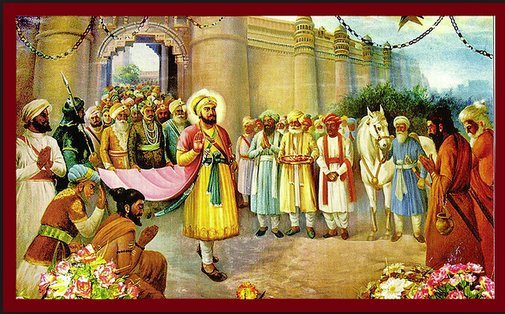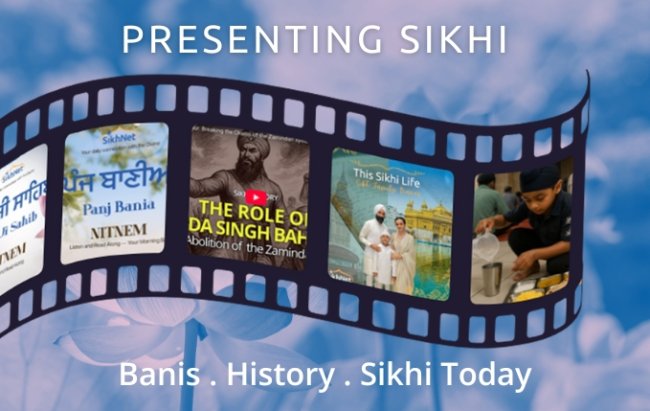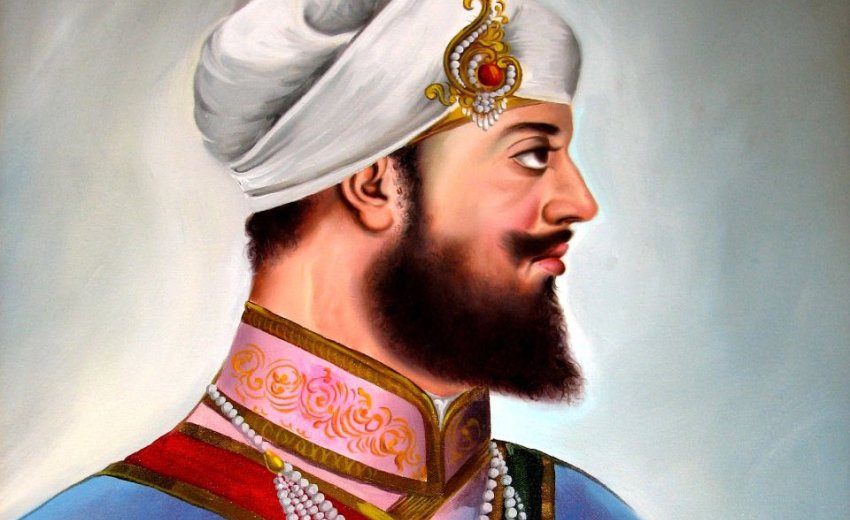Bandi Chord Divas: Celebrating Freedom
The gift of the Guru: The right of All to a life free from persecution
The ascent of the sixth Guru (1595 - 1644) to the throne of Guru Nanak was at a time of great peril. This was the moment in history when the writ of Mughal emperor was in ascendency. The fifth Guru Nanak had been tortured and then assassinated by the forces that had decreed that they would do everything in their power to stop the message and the messenger in the form of the Guru from transforming the lives of people. The message of inclusion and unity that had been emanating from the first Guru was one that they had found difficult to reconcile with their doctrine of tyranny and oppression. The truth of the message had not dulled by the time of the Sixth Guru Nanak.
Contextual Factors
Guru Nanak had arrived on this earth with the simple message that all humanity belonged to One-Creator (1). The religious and social divides were made by men2 to serve their interests. On being questioned who was better a Muslim or a Hindu? He had replied," without good deeds and best of intentions they are both in the same state of helplessness and debauchery3."
 Further the division between genders was challenged by the Guru on the premise that the woman can't be lowly then men. She was to be known as equal and paid respect in her own right as a person. Her mind was as strong as that of the men. She had equal rights and wasn't the property of another. She was the mirror in which one was to see one's reflection. She also was the reflection of the societal social conditioning. A society in which respect and rights are denied on the grounds of gender, race and social status could not in the words of the Guru Sahiban be just or spiritual. Guru Sahib challenged and asked those who followed him to challenge those traditions and customs that enslaved and separated them from the truth of the One-Creator (). The One-Creator is not divided by caste, race, and gender or physical position. He is omnipotent and omniscience; his home is every soul and in every corner of the universe.
Further the division between genders was challenged by the Guru on the premise that the woman can't be lowly then men. She was to be known as equal and paid respect in her own right as a person. Her mind was as strong as that of the men. She had equal rights and wasn't the property of another. She was the mirror in which one was to see one's reflection. She also was the reflection of the societal social conditioning. A society in which respect and rights are denied on the grounds of gender, race and social status could not in the words of the Guru Sahiban be just or spiritual. Guru Sahib challenged and asked those who followed him to challenge those traditions and customs that enslaved and separated them from the truth of the One-Creator (). The One-Creator is not divided by caste, race, and gender or physical position. He is omnipotent and omniscience; his home is every soul and in every corner of the universe.
Guru Ji had further opened the possibility that amongst the rights that free men had, was one that enshrined the thirst for knowledge. Knowledge and wisdom in the Guru's eyes did not depend on one's status in life and community but was premised on experiences and how one learned to reflect and understand them. This led to an encouragement for all to acquire basic literacy so that they could read the 'Word4' and become aware of its truth. The dependency on priestly and literary classes for meaning was to be consigned to the annals of history. All men and women were encouraged to develop competency and fluency in literacy. Furthermore the words they will learn would not be in an alien script but a script of their vernacular. This had been the foundation of Guru Granth Sahib5.
Guru Ji went on to describe the family environment as a good place to learn and model spirituality and moral values. The insistence on an ethical life enshrined within a domestic environment was a significant break with the past customs to cause outrage for the established religious practices. The messages and the doctrine of Guru Sahibs was becoming a thorn for the establishment. In their eyes and beliefs there was a need for a strong message to put a stop to all this.
Their first step was to torture and then assassinate the fifth Guru Nanak and then hold the sixth Guru Nanak prisoner. The resolve of the sixth Nanak to uphold the values and message of the five Guru Sahibs before him was not diminished by the imprisonment. Just as the first Guru Nanak had put himself in harm's way by allowing himself to be taken a prisoner so that he could challenge the oppression of the invaders and seek the freedom of the prisoners. The sixth Guru insisted on the freedom of the prisoners held before he would leave the prison.
The imprisonment had become an embarrassment for the authorities as men and women from across the country laid siege to the fort by keeping vigil6 that went on for days and nights. The imperial forces became desperate for Guru Sahib to leave and acquiesced in his demand that all the prisoners7 be freed. Thus it was that the sixth Guru Nanak left the prison with fifty two prisoners hanging on to his cloak.
Guru Sahib made his way to Amritsar where a flood of Sikh sentiment greeted him. Guru Sahib had shown in a real way that the Guru is always about freedom and humanity as enshrined in the Guru Granth Sahib. Bandi Chord Divas; thus celebrates the concept of freedom as enshrined within the Guru Granth Sahib. Bandi Chord refers to the concept:
"Free from all attachments that are material in nature and tie one to a false sense of security and status such that ethics and principals are put aside in the living of a life."
-----------------------
References:
1 () - Ek Onkarrrrr…
2 Men here refers to all humanity rather than be gender specific.
3 This is an interpretation of the words from Gurbani in Guru Granth Sahib (Shub amlaan bajoin dono roye).
4 In Sikhism this is the reference to Shabad Guru. The Guru describes himself in his own words as "Mein Banda Ek Dami" My body is but one breath away from death. The only eternal life is that of the Shabad Guru which I bequeath to you.
5 The Shabad Guru as meditated upon by the disciples of Guru Nanak today.
6 These became known as Chonkian and were the first instance of non- violent protest movement that had the resolve to stay peaceful despite provocation by the forces of oppression. The movement blessed by Guru Sahib and led by Baba Bhudda Ji.
7 These were political prisoners held by the Mughal emperor.

